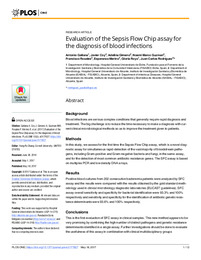Por favor, use este identificador para citar o enlazar este ítem:
https://hdl.handle.net/11000/35457Registro completo de metadatos
| Campo DC | Valor | Lengua/Idioma |
|---|---|---|
| dc.contributor.author | RODRIGUEZ DIAZ, JUAN CARLOS | - |
| dc.contributor.author | Galiana, Antonio | - |
| dc.contributor.author | Coy, Javier | - |
| dc.contributor.author | Gimeno Gascon, Adelina | - |
| dc.contributor.author | Marco Guzman, Noemi | - |
| dc.contributor.author | Rosales, Francisco | - |
| dc.contributor.author | Merino, Francisco | - |
| dc.contributor.author | Royo, Gloria Fatou | - |
| dc.contributor.other | Departamentos de la UMH::Producción Vegetal y Microbiología | es_ES |
| dc.date.accessioned | 2025-01-29T08:55:32Z | - |
| dc.date.available | 2025-01-29T08:55:32Z | - |
| dc.date.created | 2017-05 | - |
| dc.identifier.citation | PLoS One, 12(5), e0177627 | es_ES |
| dc.identifier.issn | 1932-6203 | - |
| dc.identifier.uri | https://hdl.handle.net/11000/35457 | - |
| dc.description.abstract | Background Blood infections are serious complex conditions that generally require rapid diagnosis and treatment. The big challenge is to reduce the time necessary to make a diagnosis with current clinical microbiological methods so as to improve the treatment given to patients. Methods In this study, we assess for the first time the Sepsis Flow Chip assay, which is a novel diagnostic assay for simultaneous rapid-detection of the vast majority of bloodstream pathogens, including Gram-positive and Gram-negative bacteria and fungi, in the same assay, and for the detection of most common antibiotic resistance genes. The SFC assay is based on multiplex PCR and low density DNA arrays. Results Positive blood cultures from 202 consecutive bacteremia patients were analyzed by SFC assay and the results were compared with the results obtained by the gold standard methodology used in clinical microbiology diagnostic laboratories (EUCAST guidelines). SFC assay overall sensitivity and specificity for bacterial identification were 93.3% and 100% respectively and sensitivity and specificity for the identification of antibiotic genetic resistance determinants were 93.6% and 100% respectively. Conclusions This is the first evaluation of SFC assay in clinical samples. This new method appears to be very promising by combining the high number of distinct pathogens and genetic resistance determinants identified in a single assay. Further investigations should be done to evaluate the usefulness of this assay in combination with clinical multidisciplinary groups | es_ES |
| dc.format | application/pdf | es_ES |
| dc.format.extent | 12 | es_ES |
| dc.language.iso | eng | es_ES |
| dc.publisher | Public Library of Science | es_ES |
| dc.rights | info:eu-repo/semantics/openAccess | es_ES |
| dc.rights | Attribution-NonCommercial-NoDerivatives 4.0 Internacional | * |
| dc.rights.uri | http://creativecommons.org/licenses/by-nc-nd/4.0/ | * |
| dc.title | Evaluation of the Sepsis Flow Chip assay for the diagnosis of blood infections | es_ES |
| dc.type | info:eu-repo/semantics/article | es_ES |
| dc.relation.publisherversion | https://doi.org/10.1371/journal.pone.0177627 | es_ES |

Ver/Abrir:
PLOSone.pdf
2,03 MB
Adobe PDF
Compartir:
 La licencia se describe como: Atribución-NonComercial-NoDerivada 4.0 Internacional.
La licencia se describe como: Atribución-NonComercial-NoDerivada 4.0 Internacional.
.png)